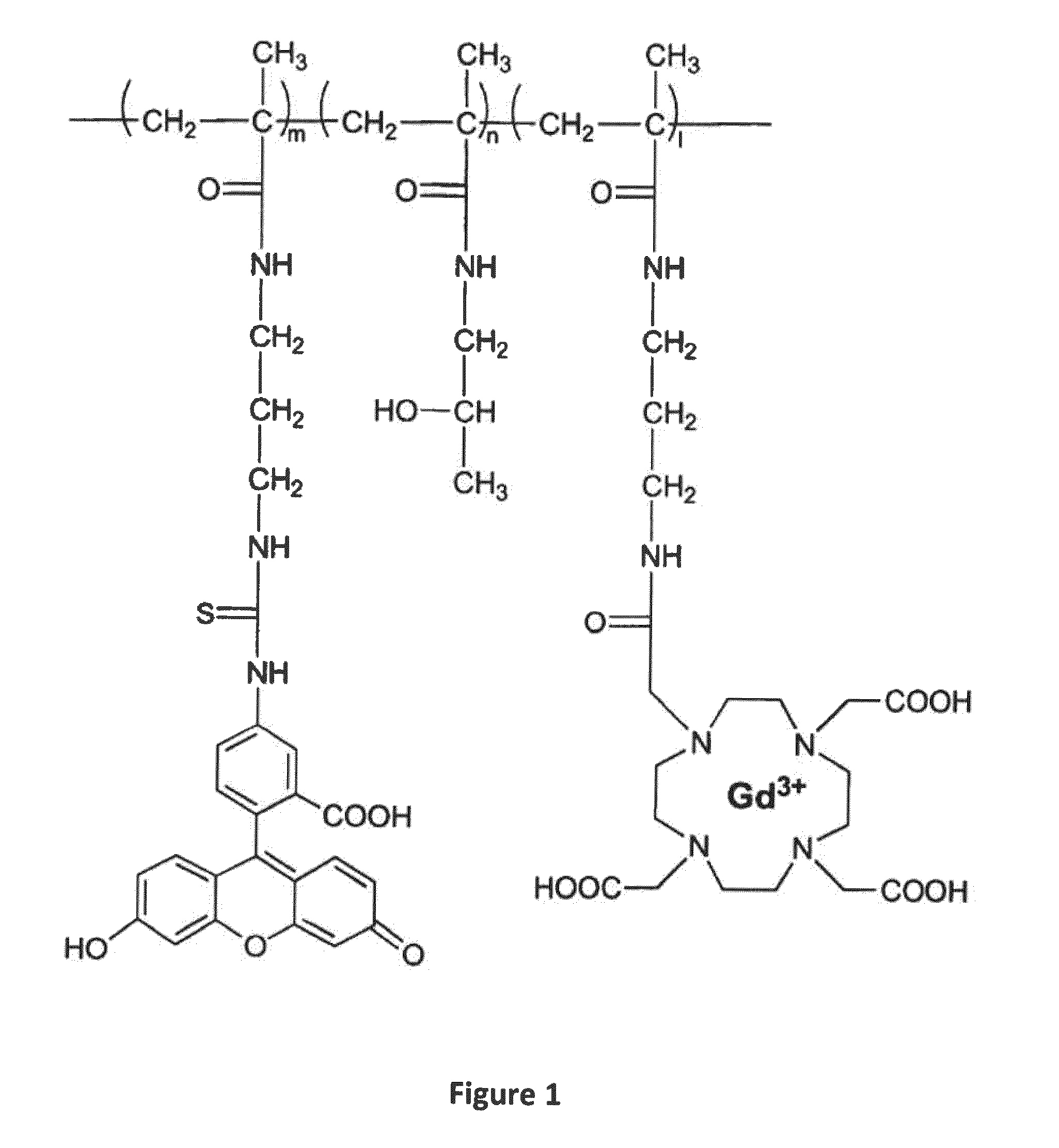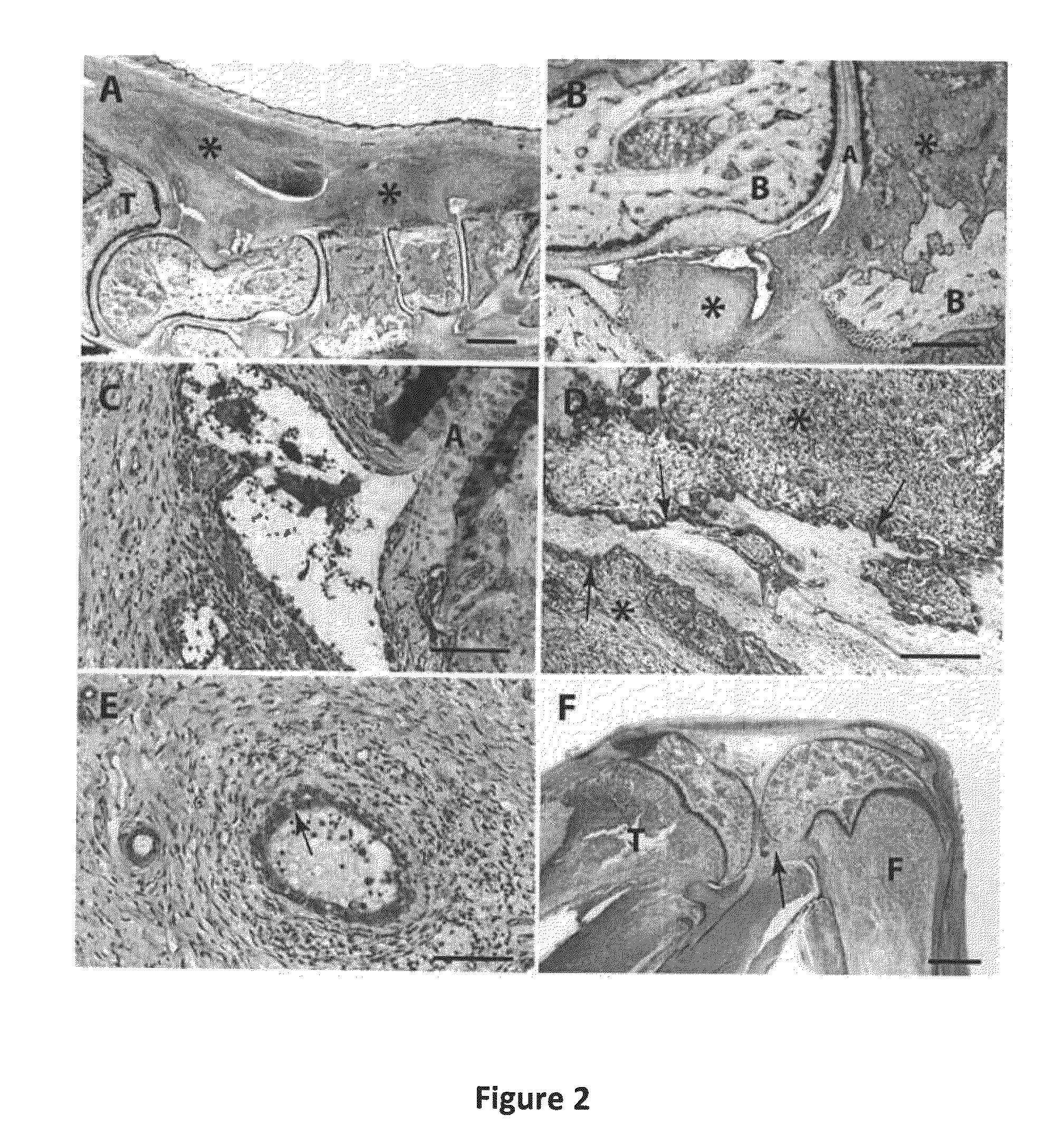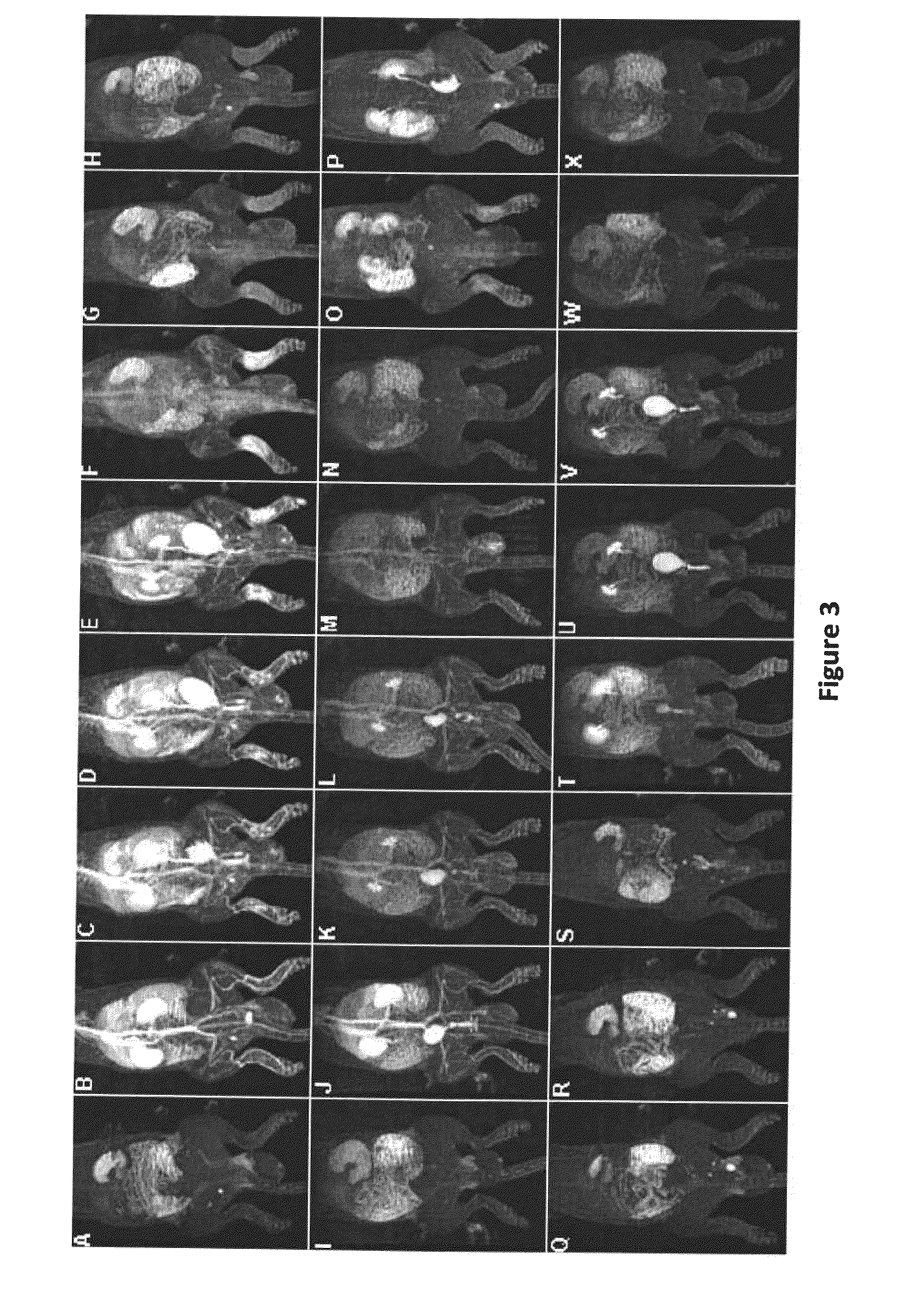Macromolecular Delivery Systems for Non-Invasive Imaging, Evaluation and Treatment of Arthritis and Other Inflammatory Diseases
a technology of microorganisms and delivery systems, applied in the field of biotechnology, can solve the problems of limited clinical application, serious side effects, side effects,
- Summary
- Abstract
- Description
- Claims
- Application Information
AI Technical Summary
Benefits of technology
Problems solved by technology
Method used
Image
Examples
example 1
Introduction
[0134]Rheumatoid arthritis (RA) is a chronic inflammatory disease of unknown etiology and complex multifactorial pathogenesis, affecting approximately 0.8 percent of adults worldwide. RA is characterized by destructive inflammation of joints, with the eventual deterioration of the articular bone and cartilage (Lawrence et al. (1998) Arthritis Rheum., 41:778-799; Firestein, G. S., Etiology and pathogenesis of rheumatoid arthritis. In Kelley's Textbook of Rheumatology 7th edition. Edited by: Harris et al., Philadelphia: Elsevier Saunders. 996-1042 (2005)). Improved understanding of pathophysiology of RA has led to several effective therapeutic strategies for the treatment of RA, such as nonsteroidal anti-inflammatory drugs (NSAIDs), glucocorticoids (GCs), and disease-modifying anti-rheumatic drugs (DMARDs) (Smolen et al. (2003) Nat Rev Drug Discov., 2: 473-488; O'Dell, J. R. (2004) N. Engl. J. Med. 350:2591-2602). These drugs are relatively safe and effective in the short-...
example 2
Synthesis of poly[N-(2-hydroxypropyl)methacrylamide-co-N-(3-Aminopropyl)methacrylamide hydrochloride][poly(HPMA-co-APMA)]
[0173]HPMA (1 g, 6.98 mmol), APMA (12.5 mg, 0.07 mmol), 2,2′-azobisisobutyronitrile (AIBN, 0.057 g) and 1 μL 3-mercaptopropionic acid (3-MPA) were dissolved in 8 mL methanol in an ampule. After 5 minutes bubbling the ampule was sealed. The mixture was then kept at 50° C. for 24 hours. Then the mixture was precipitated in 150 mL acetone for three times and vacuum dried at 30° C. The resulting poly(HPMA-co-APMA) was further purified by LH-20 column chromatography. The amine content of the copolymer was determined by ninhydrin assay as 5.5×10−5 mol / g.
Synthesis of poly(HPMA-co-APMA)-IRDye 800 CW conjugate
[0174]Poly(HPMA-co-APMA) (31 mg, 0.0017 mmol), IRDye 800 CW (1 mg, 0.00086 mol, LI-COR® Biosciences, Lincoln, Nebr.) was dissolved in about 600 μL of dimethylformamide (DMF) and 15 μL N,N-diisopropylethylamine (DIPEA) was added. The mixture was stirred overnight in da...
PUM
| Property | Measurement | Unit |
|---|---|---|
| Structure | aaaaa | aaaaa |
| Therapeutic | aaaaa | aaaaa |
Abstract
Description
Claims
Application Information
 Login to View More
Login to View More - R&D
- Intellectual Property
- Life Sciences
- Materials
- Tech Scout
- Unparalleled Data Quality
- Higher Quality Content
- 60% Fewer Hallucinations
Browse by: Latest US Patents, China's latest patents, Technical Efficacy Thesaurus, Application Domain, Technology Topic, Popular Technical Reports.
© 2025 PatSnap. All rights reserved.Legal|Privacy policy|Modern Slavery Act Transparency Statement|Sitemap|About US| Contact US: help@patsnap.com



